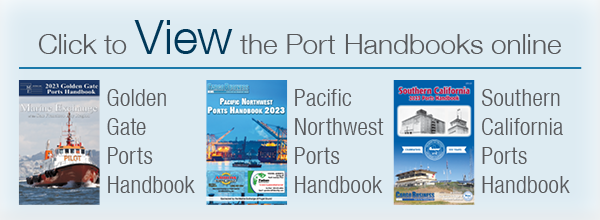|
By Anna Denecke, Associate,
Blakey & Agnew, LLC
On December 4, President Obama signed H.R. 22, the Fixing America’s Surface Transportation (FAST) Act into law. The five-year surface transportation bill provides $281 billion in contract authority, paid for with gas tax revenue and a $70 billion transfer from the General Fund of the Treasury to the Highway Trust Fund. Pursuant to House rules, the General Fund transfer is paid for through a series of budgetary offsets unrelated to surface transportation.
Setting the FAST Act apart from previous authorizations are two new freight investment programs, funded at a total of $10.8 billion over five years. The FAST Act also establishes the first-of-its-kind national multimodal freight policy, which is reflective of the many modes used by agriculture, retail, and manufacturing to get goods to market.
The FAST Act’s Nationally Significant Freight and Highway Projects program is a megaprojects competitive grant program, funded at $4.5 billion over five years. It bears similarity to MAP-21’s Projects of National and Regional Significance (PNRS), with a key difference: the Nationally Significant Freight and Highway Projects program is funded through Highway Trust Fund contract authority, meaning dollars are guaranteed. PNRS was authorized in MAP-21 for appropriations and was ultimately left unfunded by the lawmakers with jurisdiction over government purse strings.
Large metropolitan planning organizations, local governments, port authorities, and special purpose public authorities with a transportation function are among the entities eligible to apply for funds under the Nationally Significant Freight and Highway Projects program. Grants awarded by the U.S. Department of Transportation (USDOT) must be at least $25 million and total project costs should reach at least $100 million. Congress has final say over USDOT project selections and can reject awards, en bloc, by enacting a Joint Resolution.
The majority of funding is available for highway and bridge projects, as well as rail-highway at-grade crossing and grade separation projects. However, $500 million of the total $4.5 billion in the Nationally Significant Freight and Highway Projects program can be used on intermodal or freight rail projects on the National Multimodal Freight Network. There is
|

also a 10 percent set-aside for smaller freight projects that do not meet the minimum project size requirement. Lawmakers further specified that 25 percent of funds must go to projects in rural areas.
In addition to establishing the Nationally Significant Freight and Highway Projects program, the FAST Act creates a freight formula program funded at $6.3 billion over five years. The formula, named the National Highway Freight Program, provides funds to states based on existing apportionment calculations. The number of miles a state has on the Primary Highway Freight System – a new and improved Primary Freight Network – compared to the total national miles on the Primary Highway Freight System dictates how a state can spend formula funds.
The National Highway Freight Program includes a 10 percent set-aside for non-highway specific freight projects. Lawmakers specifically identify freight intermodal or freight rail projects as those that qualify for this 10 percent set-aside.
In addition to providing much-needed freight infrastructure funding, the FAST Act improves upon the existing federal freight policy. Whereas MAP-21 created a highway-focused freight policy, the FAST Act creates a national multimodal freight policy.
Included within this policy is a directive to USDOT to develop a multimodal National Freight Strategic plan within two years of bill passage. The Administration should also designate a National Multimodal Freight Network reflective of all the modes and nodes used to move goods through the supply chain. The National Multimodal Freight Network is not linked to a major funding source, but a map showing network assets is a useful tool for investment decisions by private companies, states, localities, and through other Federal programs available.
Blakey & Agnew, LLC is a public affairs and communications consulting firm based in Washington, DC.
|



